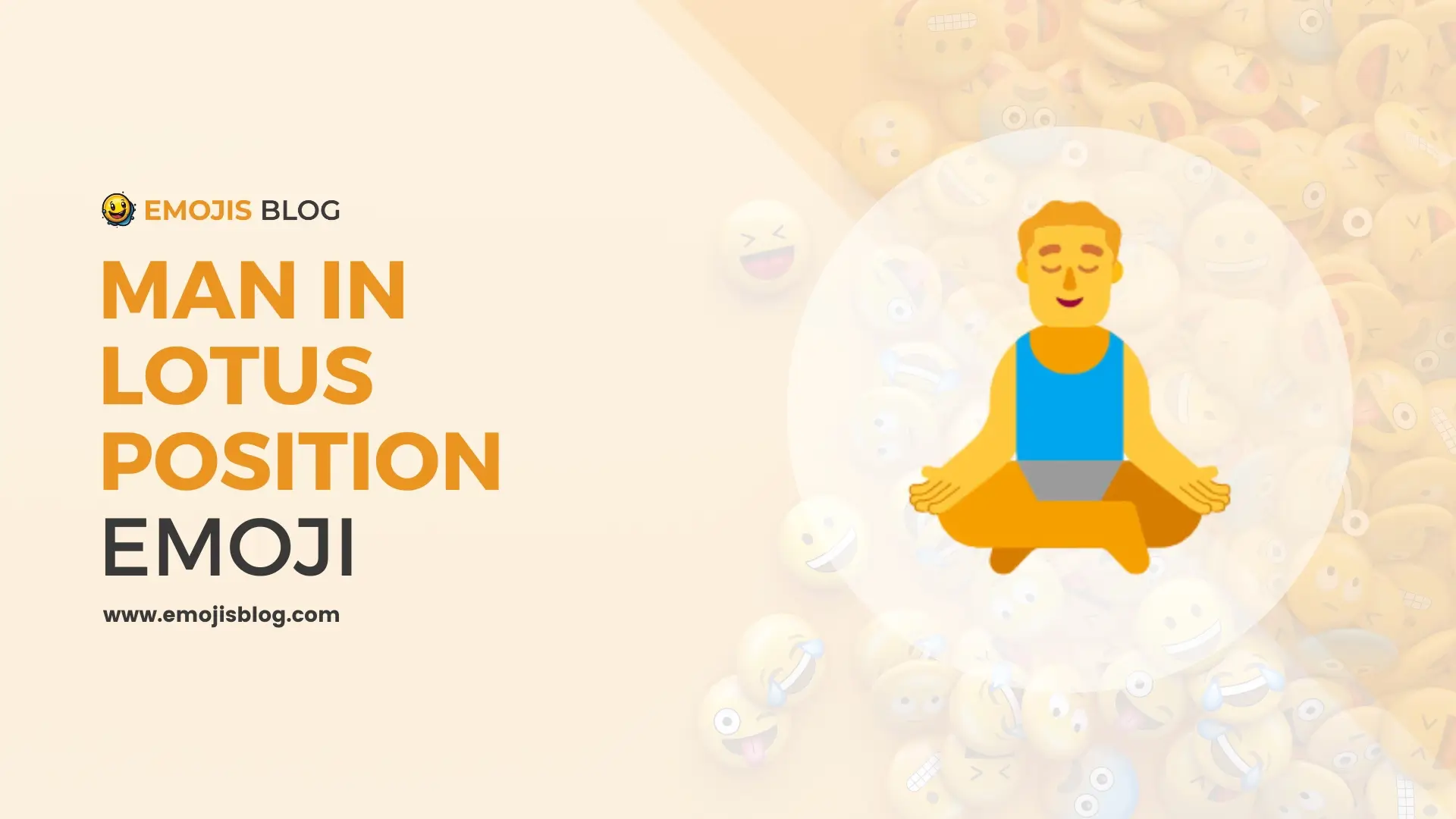What Does The Man In Lotus Position Emoji 🧘♂️ Mean?
🧘♂️
Man In Lotus Position Emoji 🧘♂️ Meanings
The man in lotus position emoji 🧘♂️ represents a person sitting cross-legged in the traditional lotus position, often associated with meditation, yoga, and mindfulness practices. This emoji conveys a sense of peace, calmness, and introspection, symbolizing a meditative or relaxed state of mind. It is widely used to depict activities related to mental and emotional well-being, spiritual growth, and stress relief. Introduced in Unicode 10.0 and Emoji 5.0 in 2017, it reflects the growing cultural emphasis on wellness and mindfulness, offering a visual shorthand for tranquility and inner peace.
Technical Information
| Attribute | Information |
|---|---|
| Unicode | U+1F9D8 |
| Emoji Name | Man in Lotus Position |
| Unicode Version | 10.0 |
| Emoji Version | 5.0 |
| Category | People & Body |
| Subcategory | Person Activity |
| Introduced | 2017 |
| Keywords | man, meditation, yoga, lotus position, calm |
| Variations | Gender and skin tone variations |
| Skin Tone Support | Yes |
| Gender Variations | 🧘 (Person in Lotus Position), 🧘♀️ (Woman in Lotus Position) |
| Code Points | U+1F9D8 U+200D U+2642 U+FE0F |
| Shortcode | :man_in_lotus_position: |
Understanding the Man in Lotus Position Emoji 🧘♂️
The man in lotus position emoji, 🧘♂️, is a widely recognized symbol in digital communication, representing peace, meditation, and mindfulness. This emoji, part of the broader emoji lexicon, is often used to convey a sense of calm and introspection. In this article, we will delve into the meaning, origins, and various contexts in which this emoji is used.
Origins of the Lotus Position
Historical and Cultural Background
The lotus position, or Padmasana in Sanskrit, is a cross-legged sitting posture originating from ancient Indian traditions. It is a common pose in Hinduism, Buddhism, and Jainism, often used during meditation and yoga practices. The position is symbolic of spiritual enlightenment, purity, and detachment from material concerns.
Evolution into Digital Representation
With the rise of digital communication, emojis have become a popular way to express emotions, actions, and ideas succinctly. The man in lotus position emoji was introduced as part of Unicode 10.0 in 2017 and added to Emoji 5.0. This inclusion reflects the growing popularity of mindfulness and wellness practices in modern society.
Symbolism of the Man in Lotus Position Emoji
Peace and Tranquility
The primary meaning of the 🧘♂️ emoji is peace and tranquility. It is often used in contexts where individuals want to convey a sense of calmness, relaxation, or a meditative state. This can be in response to stressful situations, as a reminder to stay calm, or to signify one’s participation in mindfulness practices.
Meditation and Mindfulness
Given its roots in meditation, the 🧘♂️ emoji is frequently used to represent meditation and mindfulness activities. People use it to share their meditation routines, yoga sessions, or to promote mental health and wellness. It serves as a visual shorthand for engaging in practices that center the mind and body.
Spiritual Enlightenment
In a more profound sense, the lotus position is associated with spiritual enlightenment. Using the 🧘♂️ emoji can signify a deeper, introspective journey towards personal growth and understanding. It is a symbol of seeking inner peace and higher consciousness.
Contextual Uses of the Man in Lotus Position Emoji
Social Media and Messaging
On social media platforms and in personal messaging, the 🧘♂️ emoji is used to convey a range of sentiments related to relaxation, mindfulness, and well-being. For instance, someone might use it to caption a photo of a serene landscape, share their daily meditation practice, or simply to suggest taking a moment to breathe and relax.
Mental Health Advocacy
The emoji is also employed in the context of mental health advocacy. Organizations and individuals promoting mental health awareness use the 🧘♂️ emoji to highlight the importance of taking care of one’s mental and emotional well-being. It is a visual cue that encourages mindfulness and self-care practices.
Yoga and Wellness Communities
Within yoga and wellness communities, the 🧘♂️ emoji is a staple. It is used in promotional materials for yoga classes, workshops, and retreats. Additionally, it appears in discussions about yoga poses, meditation techniques, and wellness tips, serving as a universal symbol for these practices.
Variations and Related Emojis
Gender and Skin Tone Variations
The man in lotus position emoji has variations to represent different genders and skin tones. Users can select a female version 🧘♀️, as well as a neutral or unspecified gender version 🧘. Additionally, the emoji can be customized to reflect a range of skin tones, promoting inclusivity and representation.
Related Emojis
There are several related emojis that complement the 🧘♂️ emoji, including:
- 🧘 (Person in Lotus Position): A gender-neutral version of the emoji.
- 🕉️ (Om Symbol): Represents the sacred sound and spiritual icon in Indian religions.
- ☮️ (Peace Symbol): Often used alongside the lotus position emoji to emphasize peace and harmony.
- 🧘♀️ (Woman in Lotus Position): Represents a woman in the lotus position, promoting gender diversity.
Conclusion
The man in lotus position emoji 🧘♂️ is more than just a digital icon; it is a powerful symbol of peace, meditation, and spiritual growth. Its use in digital communication reflects a broader societal embrace of mindfulness and well-being practices. Whether used to convey a moment of tranquility, promote mental health, or participate in wellness communities, this emoji serves as a reminder of the importance of inner peace and mindfulness in our daily lives.

